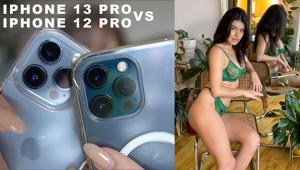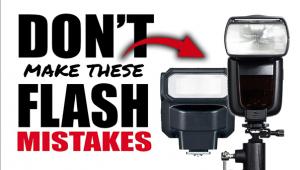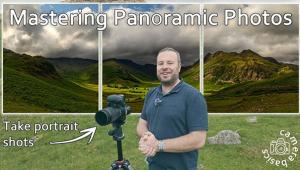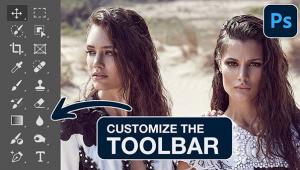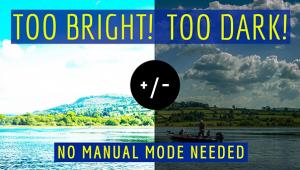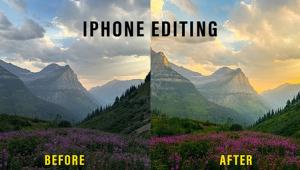Sony Xperia 1 Smartphone (As a Camera) Review

Sony offered to loan me an Xperia 1 mobile phone for 30 days. I thought it was a mistake at first. My (first) name is pretty common; I’m not a phone guy. My last cell phone had a rotary dial and a whip antenna. But I heard that the Sony Xperia 1 had some of the most sophisticated camera features around, so I cautiously accepted and approached the product the same way I approach cameras. Here is what I found.
No matter how you feel about the role of the cellphone in the world of photography, you must admit a few things. Image quality from phones keeps getting better and better. Smartphones enable more and more people to take more and more pictures, and that’s always a good thing. Decent quality mobile phones—and by extension, reasonable quality still and video cameras—are one huge notch beyond pervasive. The day will come when mobile phone numbers are issued at birth.
Those are the positive things. In the minus column, I blame phones for lowering the consumer threshold of acceptable image quality. Some audiophiles condemn iPods for the same reason. But who are we to judge what society should accept as “good enough?”
Cellphone images look good—or even great—when viewed on cellphones. Printed large or viewed on a big display, the images often fail to satisfy. But on the other hand, if you have one pan, you don’t need a four-burner stove.
First Impressions
The Sony Xperia 1 is big (6.5 x 2.8 x 0.32 inches, or 167 x 72 x 8.2 mm) and weighs 6.2 ounces. The official diagonal measurement is 6.5 inches and I don’t have a pocket large enough to accommodate it. Because it’s thin and heavy, I struggled to find a comfortable way to hold it.
 The size is a major drawing card, however. The screen is huge and gorgeous. It’s the world’s first smartphone with a 4K OLED display. Specifically, it’s a 4K HDR OLED (1644 x 3840) 21:9 CinemaWide display, and it’s impervious to nicks and light scratches (it’s Corning Gorilla Glass 6).
The size is a major drawing card, however. The screen is huge and gorgeous. It’s the world’s first smartphone with a 4K OLED display. Specifically, it’s a 4K HDR OLED (1644 x 3840) 21:9 CinemaWide display, and it’s impervious to nicks and light scratches (it’s Corning Gorilla Glass 6).
Basic controls are easy enough to decipher without the Owner’s Manual. Screen gestures and manipulations are easy to navigate, but I had a very difficult time avoiding misfiring the buttons on the sides. I frequently depressed the wrong button at an inopportune time. Let it be known that I’m not a Luddite who is unfamiliar with technology. I think the buttons could be better located.

My college-aged daughter picked up the Xperia 1 and within seconds was shooting and editing selfies and casual snapshots. No exaggeration. I think she mastered it faster than I because she’s smarter and has smaller hands. She also grew up with a camera in her crib instead of a rattle.
The photo options blew me away. I felt compelled to become at least proficient enough that I could explore and enjoy all of the possibilities. Even though it felt ungainly when taking pictures, the abundance of features overwhelmed me positively and I was motivated.
Taking a step back, Sony is ideally suited to produce a camera phone with phenomenal photo features. They have leading technology in so many fields, including digital photography, video, color signal processing, various displays (monitors), sensor manufacturing and batteries. Oh—and also lenses, audio and telephony. They are a vertical monopoly (in a good way) and we all benefit from that.

Features
Where to begin? The Sony Xperia 1 uses a Qualcomm Snapdragon 855 Mobile Platform CPU running Android 9 Pie and has 128GB storage capacity. The battery is a robust 3300 mAh and can be recharged to 50% strength in 30 minutes via its USB-PD input.
Water resistant and dustproof, the Sony Xperia 1 is rated at IP65/68. For a complete explanation of what this IP classification means in practical terms, take a look at an article I wrote on these pages in 2016. Despite the very high levels of protection, I was happy to see that Sony cautioned we should not place the device “...completely underwater or expose it to seawater, salt water, chlorinated water, or liquids such as drinks.” My very real fear is that too many people take manufacturers’ water resistance hyperbole too seriously and end up in a jam.
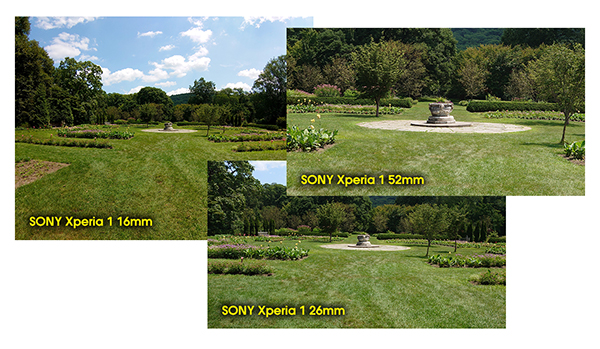
Sony writes that the Xperia 1 has a triple lens camera system which suggests that there is one camera and three lenses. Think of them as three separate cameras as far as specifications go. All are 12-megapixel and have image stabilization. The cameras are as follows:
16mm f/2.4 wide-angle, 130° angle, fixed focus lens with 1/3.4 inch sensor size, SteadyShot with Intelligent Active Mode (5-axis image stabilization).
26mm f/1.6 normal, 78° angle lens, 1/2.6 inch sensor size, Optical SteadyShot (hybrid OIS/EIS video stabilization), dual photo diode, Raw noise reduction and 960 fps super slow motion video (FHD/HD).
52mm f/2.4 telephoto, 45° angle lens, 1/3.4 inch sensor size, Optical SteadyShot (hybrid OIS/EIS video stabilization).
Please note that diagonal of a 1/3.4 inch sensor is 0.29 inches, and a 1/2.6 inch sensor measures 0.38 inches. In comparison, a Sony APS-C size sensor measures 1.11 inches diagonally. The number designations can be confusing. But by any measure, cell phone sensors are usually pretty tiny when compared to true digital cameras. To that add a physically small lens and it’s easy to understand why smartphones cannot deliver image quality that’s truthfully on par with cameras equipped with larger sensors and more sophisticated optics.
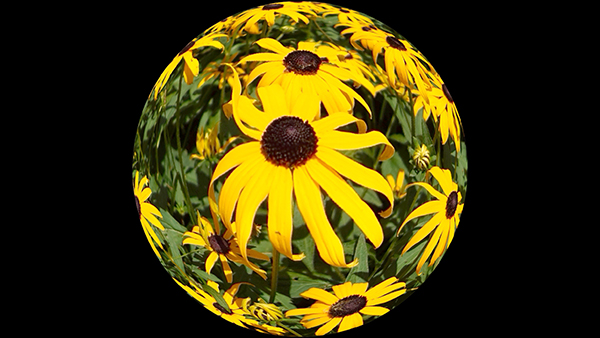
Common camera features include a Sony BIONZ X image processor, Eye Autofocus, 4K HDR movie recording H.265, HDR options, Hybrid Autofocus, bokeh effect and a very compelling 3D Creator feature (see video demo here).
There’s also a Front Camera (Sony’s terminology) that’s 8-megapixel with a 1/4.0 (0.25 inch) size sensor, HDR, 5-axis image stabilization, portrait selfie effects, display flash, hand and smile shutter plus that fascinating 3D Creator.
Triple Lenses vs. Zoom
Having wide-angle and telephoto optical lenses beats the hell out of any form of digital zoom, and something can be said about the self-imposed discipline of working with a quasi prime lens. That said, on a small camera with a small lens and small sensor, I’ll take an optical zoom over a triplet any day.
Sound Features
Advanced audio features include High-Resolution Audio (even FLAC!), a stereo speaker, multi-dimensional cinematic Dolby Atmos sound and stereo recording capability.

Sensors, Have We Got Sensors
Beyond being a phone and a camera, the Sony Xperia 1 is a true scientific instrument packed to the ever-loving gills with environmental sensors, including an accelerometer, ambient light sensor, barometric pressure sensor, eCompass, fingerprint sensor, game rotation vector, geomagnetic rotation vector sensor, gyroscope, Hall sensor (measures the magnitude of a magnetic field), magnetometer, step counter, step detector, significant motion detector, proximity sensor and RGBC-IR sensor. It cannot, unfortunately, tell whether you have a cold or if it’s just allergies, but it can sense damn near anything else.
Build Quality and Construction
Although the size and shape remind me more of a dessert plate than a phone, the Sony Xperia 1 feels solid and sturdy. The slight heaviness adds to the overall feeling of durability and strength. I wouldn’t hesitate to carry it in a shirt pocket except it won’t fit.

In the Field (and at the table)
In a perfect world where cost is no object, I would buy this smartphone strictly for its ability and readiness to photograph food. That’s not to hint that it cannot do other things—it sure can—but it’s a flawless food shooter. Seated, with my elbows on the table, I can use both hands to compose and snap my vittles.
Otherwise, I had a bit of trouble finding a comfortable way to hold the camera. This is my only complaint.
Now, it’s probably just me, so don’t take it as an indictment of the product. I guess after so many years of using every conceivable camera from an Argus C3 to a Fujifilm X-H1 I expect to find lots of places for my fingers and multiple thumbs to rest. The Sony Xperia 1 isn’t built that way, and I’m sure that was intentional. I could learn to use the phone-camera correctly with enough practice, but the learning slope is steeper than I like.
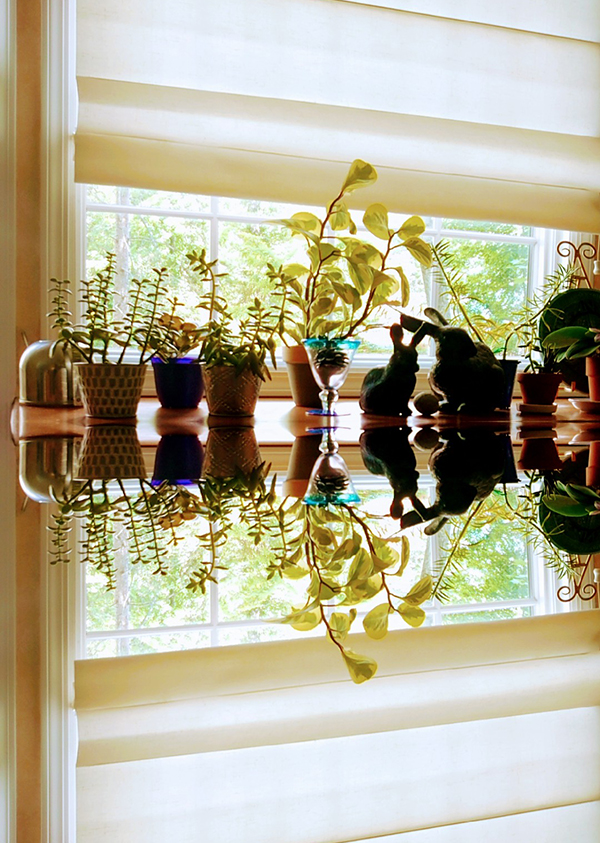
Special Effects
Like many of you, I’m a special effects junkie. The Sony Xperia 1 has many, many cool options and capture modes, and I was fascinated trying them all. You can add filters to selfies, shoot panoramas, create avatars, play with bokeh and much, much more. The fisheye effect is one of the best simulations I’ve ever seen. But the kaleidoscope is my overall favorite.

Sadly, despite the fact that the creative stuff is all really strong and fun, the novelty wears off sooner or later and I’m stuck trying to shoot video and still images with a device that just doesn’t fit my hands.
Conclusion
I didn’t mention anything at all about the telephone features. I don’t feel qualified to review the telephony and, in fact, the device I borrowed was never activated to be used as a phone. I didn’t write about gaming possibilities either, for the same reason, but I do wholeheartedly acknowledge its potential.

Coming from a long tenure and deep background as a still photographer I found a lot to like about the Sony Xperia 1. It’s a technological marvel, and arguably the world’s finest example of how a capture device, display device and strong set of signal processing and aberration correction firmware can work in harmony in one product to produce truly outstanding images.
That’s the real key here. Everything is optimized to work perfectly together. From input to output, from snap to share, every feature is interconnected and sublimely cohesive.
The Sony Xperia 1 is a powerful tool that’s fun to use. It has its quirks and faults, but it produces stunning images, particularly when they are viewed on its beautiful 4K OLED display. Available in black, purple, white and gray, price for this smartphone alone is $999 but you may find a better deal with a little clicking.
—Jon Sienkiewicz




